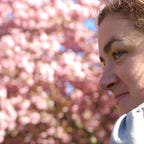 There is a lot of spirited debate these days about philanthropy’s failures and opportunities. Author and muckraker Anand Giridharadas is walking off sets, Amazon CEO Jeff Bezos’ announcement about his new philanthropic efforts were met with a heap of criticism about his labor practices (from both inside and outside the company), and the Charity Defense Council continues trying to convince funders that “inadequate resources are not the path to global transformation.” For a sector that has historically comported itself with a quiet, polite, one might even say avoidant, decorum, it seems the white gloves are finally coming off.
There is a lot of spirited debate these days about philanthropy’s failures and opportunities. Author and muckraker Anand Giridharadas is walking off sets, Amazon CEO Jeff Bezos’ announcement about his new philanthropic efforts were met with a heap of criticism about his labor practices (from both inside and outside the company), and the Charity Defense Council continues trying to convince funders that “inadequate resources are not the path to global transformation.” For a sector that has historically comported itself with a quiet, polite, one might even say avoidant, decorum, it seems the white gloves are finally coming off.
No one, I would argue, is encouraging philanthropy’s newfound realness more passionately or constructively than Edgar Villanueva. He is an author, social justice philanthropy expert, and a Native American funder. I was excited to catch up with him on his recent book tour to ask him more about his bold new book, Decolonizing Wealth, a provocative exploration of the dysfunctional colonial dynamics at play in the world of high finance and philanthropy. Villanueva peels back the layers of the often cloistered world philanthropy and tackles the endemic old boy networks and savior complexes that underpin much of international philanthropy.
(And if you like this exchange, and are in the Bay Area, join us for our live conversation on October 24th, free and open to the public.)
Courtney Martin: Edgar, I adore this book. It is both deeply personal in a way that sucks the reader in (like the best kind of memoir), but also unapologetically political and even prescriptive. But let’s start with the personal. Was there a moment when you thought to yourself, “I just have to write this book?”
Edgar Villanueva: I specifically recall an incident at a foundation board meeting when I asked a question, an inquiry that was truly in the spirit of pushing the conversation forward. The president of the foundation — in front of the entire board — silenced me by declaring that I was “getting too big for my britches.” It felt like public ridicule and a threat. Eventually, [after] a series of events, I felt so powerless, I had no option but to leave. At the time, I was participating in a philanthropy fellowship for “best in class” funders. After our fellowship, we reconnected to find that a significant number of us no longer worked in philanthropy. Why were the best and brightest leaving the field? They were being pushed out. I understood clearly in that moment that philanthropy worships the status quo. Anyone who steps up as a strong leader with new ideas immediately becomes a target — particularly if you’re a person of color. I believe that people of color, with the very way that we move through the world and our worldview, are just so completely misaligned with philanthropy’s culture that it is very difficult for us to be successful. When I realized that the pain I experienced was shared by many and that local communities were being harmed, I knew I had to speak up — and in doing so, begin my own journey of healing.
CM: You write, “Money is a tool to reflect the obligations people develop to each other as they interact.” Say more about this. It’s such an amazing definition.
EV: In the dominant world view, money is purely a transactional tool and it has been used to cause harm. Institutions that move and control money have used it to exploit, separate, and divide. The root of it all is power. In the book I make the case that money is actually neutral. It’s more about the motives and intentions in how money is used — it can be a tool for building one’s own power, legacy, and one can build fences around it to keep everyone away. You can develop intentional policies so that those with money get more money, valuing currency over relationship. That separation paradigm breeds distrust in others and even fear that someone will take what is yours. Bottom line — we humans made money up out of thin air, as a concept, a tool for a complex society — a placeholder for aspects of human relations. We forget that we gave money its meaning and its power. And because money itself is neutral, it should and can be a tool of love, used to facilitate relationships, to help us thrive.
CM: Now some basics on colonization, because it’s so central to your book’s thesis. Can you talk a bit about the difference between external and internal colonization, and what both have to do with philanthropy?
EV: In researching colonization, I learned that academics who study colonization distinguish between internal versus external (or exploitation) colonization. Internal colonization seeks to manage and control people inside the borders of the empire, using tools like schooling, policing, segregation, surveillance, and divestment. External or exploitation colonization is focused on extracting goods (e.g tea, silk, or sugar, or resources like human labor, coltan, or oil) in order to increase the wealth and power of the colonizer. Both kinds of colonialism can and often do co-exist. Regardless of the type, both are violent and have the mantra of divide and conquer, command and control, and above all: exploit. In all scenarios, colonization has deep, long-lasting impacts on the colonized, the Natives. In the U.S., it is even messier because we have “settler colonialism,” which means the colonizers never left.
Colonization has a lot to do with philanthropy. Organizations and individuals who invest money need to understand the trauma that exists because of how wealth has been accumulated. We must own our part in perpetuating colonizing dynamics in order to really practice grant-making and investing with a lens of racial equity.
CM: How do we fund in ways that undo colonization?
EV: The fact is we can’t. What we can do is use our resources in ways that stop more hurt from happening and to heal trauma that has been caused. Colonization and oppression are still happening today — we are not living in a post-colonial society; oppression is happening in much the same way too — particularly inside our borders. Just as before, white supremacy is being perpetuated through our schools, policing, segregation, surveillance, and divestment. Philanthropy can fund the building of power in communities of color and marginalized communities to fight in these spaces.
CM: You lay out seven steps of healing: grieve, apologize, listen, relate, represent, invest, and repair. Readers should really delve into all seven, because it’s such a radical prescription, but let’s just dig into the first. What does it really look like for this sector to not only tolerate, but encourage grieving? Are there any foundations actually doing the work of public grief and healing, in your opinion?
EV: I’ve seen glimpses of grieving happening in the sector, but it’s so minute that it’s almost hard to imagine. There are organizations like Resource Generation who help wealthy young people come to terms with their wealth, privilege, and whiteness. I’ve not been in their sessions, but I’ve heard that they can be quite heavy. I share in the book the story of Hilary Giovale, a white trustee of a family foundation, who grieved, apologized, and is moving through the steps of the book. Ultimately, in order to grieve, organizations have to deal with their whiteness. That’s work that is uncomfortable and many are not willing to really take their whiteness to task. Our sector is so white-dominant, that imagining it operating any different almost feels like science fiction. I do think it’s possible though.
CM: You write, “Effectively moving money to where the hurt is worst — using money as medicine — requires the funder to have deep, authentic knowledge of the issues and communities that will be putting the funding to use.” Isn’t that kind of a pipe dream in our current philanthropic sector, when there are so few people of color, or people from low-income backgrounds actually in the role of grant maker?
EV: In some ways, yes. In an organizational environment governed by the dominant worldview, individuals are prone to make decisions from an ethnocentric vantage point. Lately, I’ve been saying this to funders — taste and see, that it is good! By this I mean, fund communities of color, trust them, provide the kind of support many of us know is philanthropy practice at its best (we’ve all heard it for years at conferences and in reports). Just do it. White, privileged folks (especially men) can be trained, read reports, and commission studies. However, you will *never* be able to fully understand the experience of a person of color. We’ve got to move beyond our desire to be experts, fully competent in a subject, before acting. I think our unwillingness to act because we’re looking for silver bullet solutions is actually a cop out. How many more conferences will there be on equity?
Ultimately, the call to philanthropy is clear: it must fundamentally change its ivory tower culture, what it accepts as acceptable behavior, how it defines success and leadership, in order to really walk its talk: to embody the love of humanity.
Up until now, diversity and inclusion tactics have been about getting different kinds of people in the door, and then asking them to assimilate to the dominant white culture. The issue is not recruitment of diverse humans — the “pipeline” focus of the past, getting people in the door, laying a seat at the table, as is often said. The issue is creating a culture of respect, curiosity, acceptance, and love. It’s about building a whole new table.
CM: The epigraph to your book is by none other than Beyoncé: “If we are going to heal, let it be glorious.” Which I love, of course. And yet, I feel like most of the conversation about healing philanthropy feels very un-glorious to those who are currently involved in it — like a sad, if not redemptive slog. How could it be glorious? How could it be joyful?
EV: Do you recall that feeling of being sick for maybe a week or so…maybe it’s the flu…when you’re finally well, it’s like having a new lease on life! Oh the joy. I remember being sick and thinking to myself, “When I get better, I’m going to work out, eat better, finally do that second 5K.” There is joy on the other side of healing. Writing this book has been a healing process for me. I had to dig deep into some painful memories, have painful conversations that retraumatized me. However, in the work of decolonization, walking into that darkness (into the belly of the serpent) is actually a part of the healing process. The idea and hope of unity, of love, of mutual care and support, of “everyone has what they need” — is joyous.
